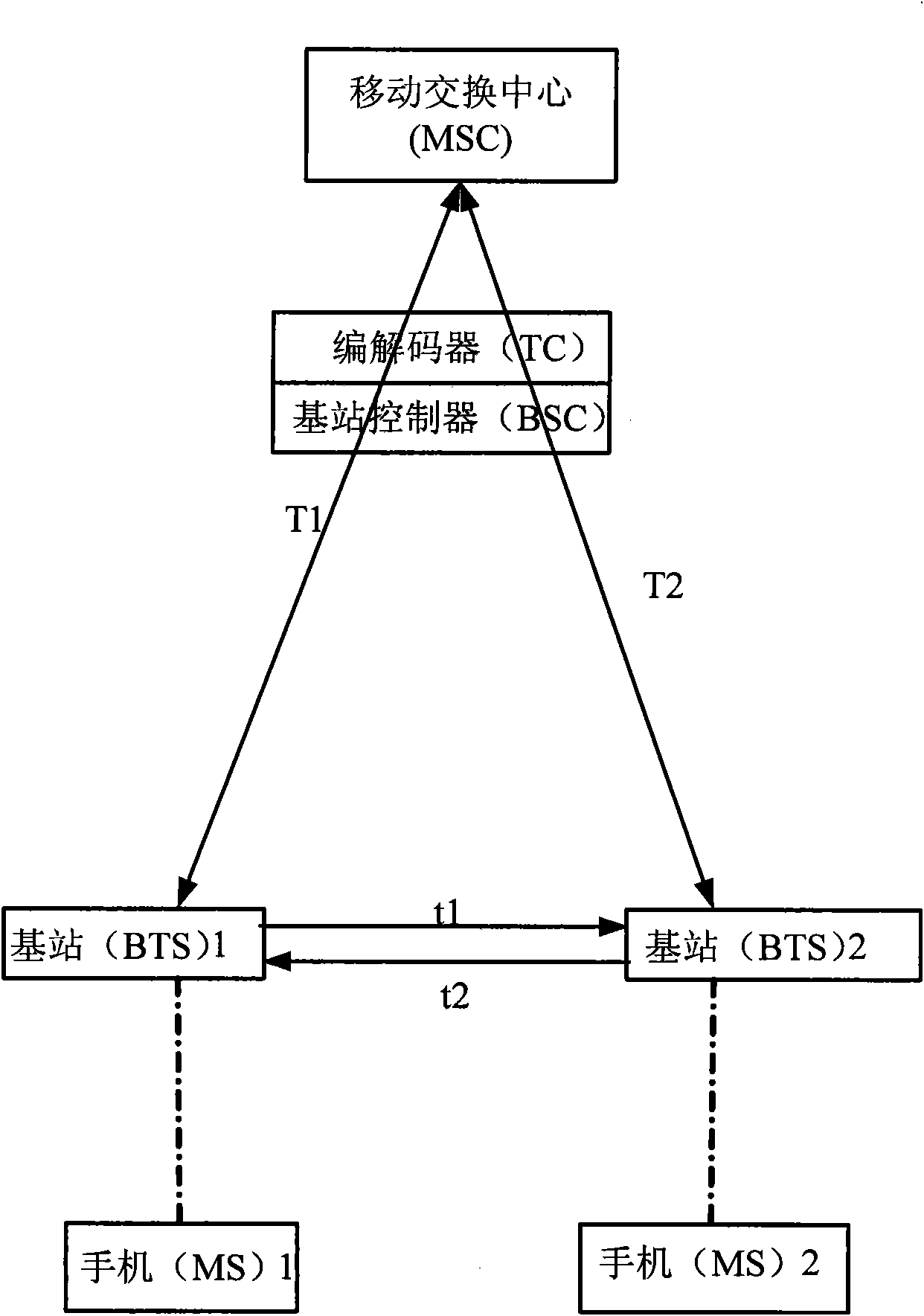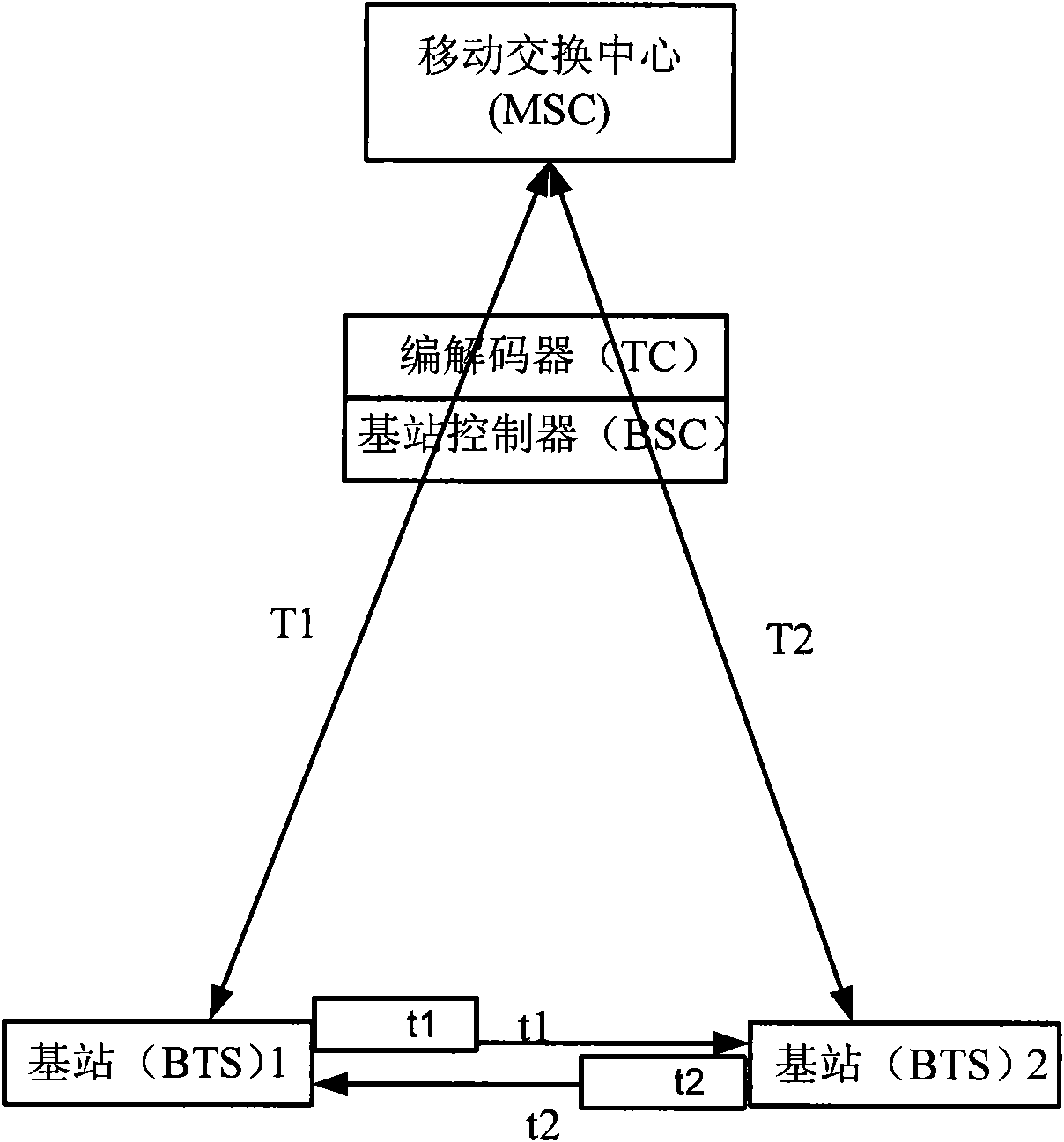Method and device for realizing local exchange
A technology of local switching and mode conversion, applied in the field of communications, to improve user perception and customer satisfaction
- Summary
- Abstract
- Description
- Claims
- Application Information
AI Technical Summary
Problems solved by technology
Method used
Image
Examples
Embodiment 1
[0088] Embodiment 1: Design of the conversion process of the control plane of the local exchange
[0089] In the present invention, to realize local exchange, just need to realize three steps: the establishment of RTP link between base station and base station; From base station to the RTP link between base station controller handover on the RTP link between base station and base station; Release of the RTP link between the base station and the base station controller.
[0090] Step 1: Establish a new link. The BSC sends a new link establishment message to BTS1 and BTS2. The new link establishment message sent by the BSC to BTS1 includes the IP address and port number of BTS2. Similarly, the new link establishment message sent by the BSC to BTS2 includes the IP address and port number of BTS1. In this way, BTS1 and BTS2 can know each other and establish an RTP link with each other.
[0091] Step 2: A new link establishment completion indication. Note that when BTS1 activa...
Embodiment 2
[0094] Embodiment 2: Calculation of delays Δt1 and Δt2 for switching from traditional mode to local switching mode
[0095] Step 1: When MS1 (first terminal) and MS2 (second terminal) establish a call, BSC sends TCH (Traffic Channel, business channel) channel activation message 101 to BTS1 (first base station) and BTS2 (second base station) and TCH channel activation message 102, record the sending time T11 and T21 respectively, and establish the communication link between BSC and BTS1, BTS2.
[0096] Step 2: When the BSC receives the channel activation confirmation messages 102 and 202 from BTS1 and BTS2 respectively, record the receiving time T12 and T22. Therefore, can calculate the Abis mouth time delay T1=(T12-T11) / 2 of BTS1 and BSC; Similarly, the Abis mouth time delay T2=(T22-T21) / 2 of BTS2 and BSC; Now BSC and BTS1, BTS2 The call links between them are established respectively. The call starts.
[0097] Step 3: When the call is established, the two telephones swit...
Embodiment 3
[0111] Embodiment 3: Conversion from local switching mode to traditional mode
[0112] Although the conversion direction is opposite to that of the second embodiment, the process is exactly the same except for individual parameter settings. Since the switching direction is from the link between BTS1 and BTS2 to the link between BTS and BSC, when sending a new link establishment message, the link establishment parameters carried are the IP and PORT information of the BSC. That is to say, to re-establish a new link with BSC. When the old link is released, the link between BTS1 and BTS2 is released. At this time, the link delays Δt1 and Δt2 do not need to be recalculated, and the values calculated in the conversion from the traditional mode to the local switching mode (that is, the second embodiment) are still used, and are carried in the release old link message.
[0113] attached image 3 An application diagram of Δt under local switching is depicted.
[0114] It can be s...
PUM
 Login to View More
Login to View More Abstract
Description
Claims
Application Information
 Login to View More
Login to View More - R&D
- Intellectual Property
- Life Sciences
- Materials
- Tech Scout
- Unparalleled Data Quality
- Higher Quality Content
- 60% Fewer Hallucinations
Browse by: Latest US Patents, China's latest patents, Technical Efficacy Thesaurus, Application Domain, Technology Topic, Popular Technical Reports.
© 2025 PatSnap. All rights reserved.Legal|Privacy policy|Modern Slavery Act Transparency Statement|Sitemap|About US| Contact US: help@patsnap.com



